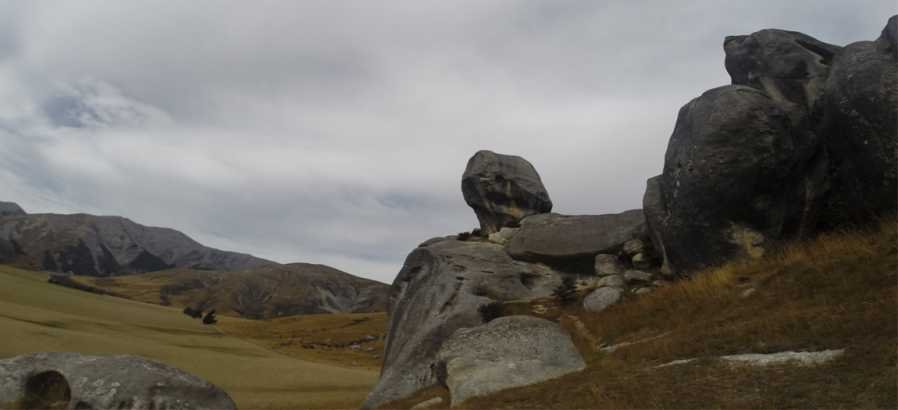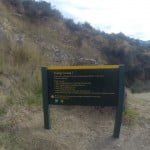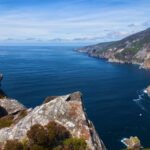Blogger: Breada Cahill – Christchurch, New Zealand.
Castle Hill lies approximately an hour and a half drive from Christchurch, in the Canterbury region of New Zealand. Castle Hill lies between the Torlesse and Craigieburn mountain ranges. It is characterized by its distinctive limestone rock formations which are water eroded remnants of limestone formed during the Oligocene age 30-40 million years ago when much of present day New Zealand was covered by sea. These rock formations, known as Kura Tawhiti, provides a combination of spiritual serenity and physical exertion. Kura Tawhiti translates as treasure from afar and represents an area of special cultural, spiritual and historical significance to Ngai Tahu which is the principal Maori iwi (tribe) of the Southern region of New Zealand. However, the rocks also offer a world class bouldering and rock climbing opportunity for the enthusiasts among you. While we didn’t partake in the rock climbing on this occasion, I would definitely seek to revisit the area and give bouldering a go. Instead, on this visit we took a short walk among the boulders and soaked in the surrounding views.
After we had spent a little time taking in the rock formations we went further along the road to the destination of our days activities – the Cave Stream Scenic Reserve. It is not necessary to have a guide through the cave so long as you do some research before you go. The main points to remember are that you need to be properly equipped and you are strongly advised to go against the stream.
When we arrived at the car park we were slightly nervous upon noticing other visitors kitted out with wetsuits and helmets. Fortunately, there is a range of preparation that will get you through and though we didn’t bring our snorkels, we were good to go. We popped our walking shoes on our feet and our lights on our heads and off we went to the outlet of the stream. (Well, we first made the miscalculated move of going to the opposite end but were quickly advised to rethink and start at the outlet.) Beginning at the outlet is good for two reasons. It means that everyone is walking in the same direction which is important as space is limited at many points along the way and it is a wiser route to go against the flow of the stream.
Within seconds of entering the cave we had taken the first turn and found ourselves up to our waists in cold water, in pitch darkness, with the only light coming from our headlights and the only audible sounds; the echoes of our splashing feet and the gushing of the stream. The stream is a series of mini waterfalls, peaks and troughs, twists and turns. The depth varies from ankle deep to waist deep and the width varies from more narrow sections to wider and higher caverns. One must, at all times, pay attention but the variety of this little trek is what makes it interesting.
For those who may be claustrophobic it is difficult to say how you might feel in the cave. While it is daunting, this cannot be denied, the cave is not radically narrow at any point. I personally found that my concentration was firmly on finding my feet and adapting to the ever changing gradients and directions. Therefore, I found myself distracted from any nerves I may have had. I would perhaps actually go to the other extreme and recommend that one not forget to take a moment to stop, switch off your headlight and take a minute to adapt to the dark, look around and soak in the fact that you are in the middle of the hill. We were particularly lucky that there was a significant space between us and the next group of people both in front and behind, giving us that strong sense of solitude and peace.
The walk is 362 meters from inlet to outlet and the website recommends that you allow an hour to complete. An hour is a generous figure, I believe we made it through in approximately half and hour. Again, don’t forget to slow down and bask in the awesomeness of the adventure.
QT TIPS
1) Be Prepared
As the Boy Scouts preach, be prepared!
- You will need to wear strong, secure walking shoes; these can be walking boots or trainers so long as you have a grip.
- You will need a torch for each person and a spare set of batteries for each torch. I would recommend you get the miners style lights which can be worn on the head. This allows you to keep your hands free.
- A warm top and shorts or sports pants are a good idea.
- A change of clothes! – You will absolutely need a change of clothes afterwards.
2) Think minimal
Don’t bring anything you don’t need! ie. Empty your pockets and forgot all mobile phones and bits and pieces that will inevitably get wet when you are up to your waist in water. Perhaps invest in a disposable water proof camera if you want to capture the moment – I had a water proof camera going through so this was not a worry.
3) Get the Order Right
If you are making your way to the cave stream, stop off to see the rock formations first. You may be a little cold after your trip through the hill so it’s best to take a leisurely stroll around the rock formations before as opposed to after.
4) π
Remember the wonderful pies from my last blog post about our trip to Hokitika? Well this is another prime opportunity to stop off at The Famous Sheffield Pie Shop as Castle Hill is en-route to the West Coast from Christchurch.
Blogger: Breada Cahill - Christchurch, New Zealand.
From Northern Hemisphere to Southern; this Kerry lady's journey began, like many good stories, in Ireland and has so far led to life in Abu Dhabi, San Francisco and now Christchurch. Breda loves photography, good food (and wine), Dr. Seuss quotes. live music and meeting new people. It's not Dr. Seuss, but this Helen Keller quote is certainly one to bear in mind; 'Life is either a daring adventure, or nothing at all'.









